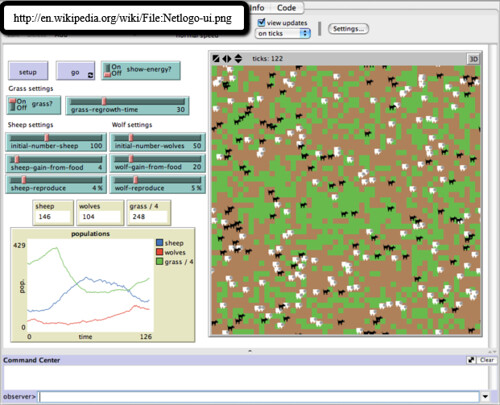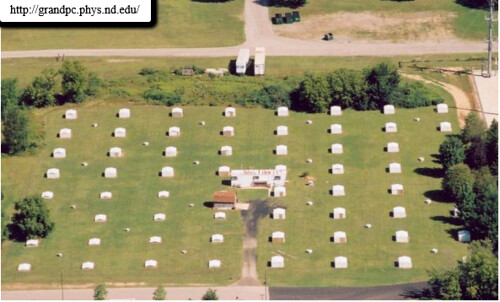Expect great things from the Notre Dame QuarkNet Center (NDQC) this summer as a group of professors, teachers, and high school students embark on research in the field of particle physics. A series of seven specific research projects are to be conducted over the next few weeks. I will be attempting to track the progress of these projects by taking photos and writing blog posts on any important happenings. Below I have written a brief overview of each of the seven projects and their goals for the summer.
In this first project, the students and teachers will be examining simulations of certain events that may be experienced in our own lives as well as events like a zombie apocalypse that may be a bit less common. They will use a computer program called NetLogo which models events like this giving the user the ability to change certain variables and observe how the changing of that variable may affect the outcome. Events that can be looked at include spreading of a disease through a population, flocking of birds in the sky, protein binding, blood clotting, myxobacterium movement, and others. Below is a screenshot of a sheep/wolf simulation like one may see when they use NetLogo.
Cosmic Ray Detectors (CRDs):
This project will be examining the cosmic rays that come shooting in from space and examine properties of the muons that are detected. This project focuses on detecting the muons and separating them from anything else that the detector might pick up. A muon is like an oversized electron and they can be detected by placing a series of ray detector paddles one on top of the other. Only the muons can make it through the detector far enough to be counted by all four detector paddles.
CMS Upgrade:
The CMS Upgrade project is focused on testing and building parts to be used in an upgrade done on the CERN Large Hadron Collider (LHC) in Switzerland. This upgrade is to be done on the Compact Muon Solenoid (CMS) detector (pictured below) in a few years as physicists look to advance their knowledge in particle physics. The CMS is one of four particle detectors in the collider. The LHC has the ability to fire protons at incredibly fast speeds to do things such as recreating energy densities of the Big Bang. The students and teachers on this project will be testing certain parts and pieces to be added to the detector to see what works best. This project will be a very hands on project with some potentially very important results that hopefully will end up being used in the LHC. The LHC currently includes over 500 components designed and constructed in part by high school teachers and students at NDQC.
The CMS Data group will be working on the CMS detector at CERN as well but they will be looking at the current data that has been released. The Data group will try to look at the data that has been released and make it accessible. The students and teachers will change certain graph plots to attempt to find meaning in it all. They have available hundreds of thousands of plots to use in gaining insight into the physics of the LHC.
DVT:
The Digital Visualization Theatre (DVT) is the digital planetarium located in the Jordan Hall of Science at Notre Dame. The job of the DVT group is to continue to write and produce a show in the digital planetarium for the general public on the LHC and its detectors. The main focus on this project will be constructing all of the animation that is necessary for the show to happen. Using a Hollywood level animation program (Lightwave), students and teachers will have to build everything themselves on the computer and then make it all into a show for the planetarium. This will be no easy task, however, as some of the more complicated pieces to the show may take hours to complete.
Astrophysics:
The astrophysics project, as the name states, will primarily be studying the sky and stars. One thing they will do is observe solar flares on the Sun which are a source of many strong cosmic rays. They will be working on the roof of the Jordan Hall of Science with different telescopes primarily when it is dark out to take pictures of many different astronomical happenings in space. They can expect to see some incredibly extraordinary events through the telescopes. The students and teachers will collect their data late into the nighttime hours. Then they will be able to analyze their pictures in the morning back in the lab and make observations based on what they saw the night before.
The study of Gamma Ray Astrophysics at Notre Dame (GRAND) is conducted in a large field off campus (below). It is a series of sixty four cosmic ray detectors much like the ones that I talked about earlier. The detectors function the same way as the CRDs in that they are stacked on top of each other and detect muons. These particular detectors differ, however, in that they are much larger than the small cosmic ray detectors that will be used in the lab. Each detector is housed in a building that looks a bit like an enlarged doghouse. A key part to this project will be simply keeping the experiment running by doing maintenance on the detectors when needed. The students and teachers also will look at the data, which is collected 24/7, and draw conclusions based on the muons that are detected.




